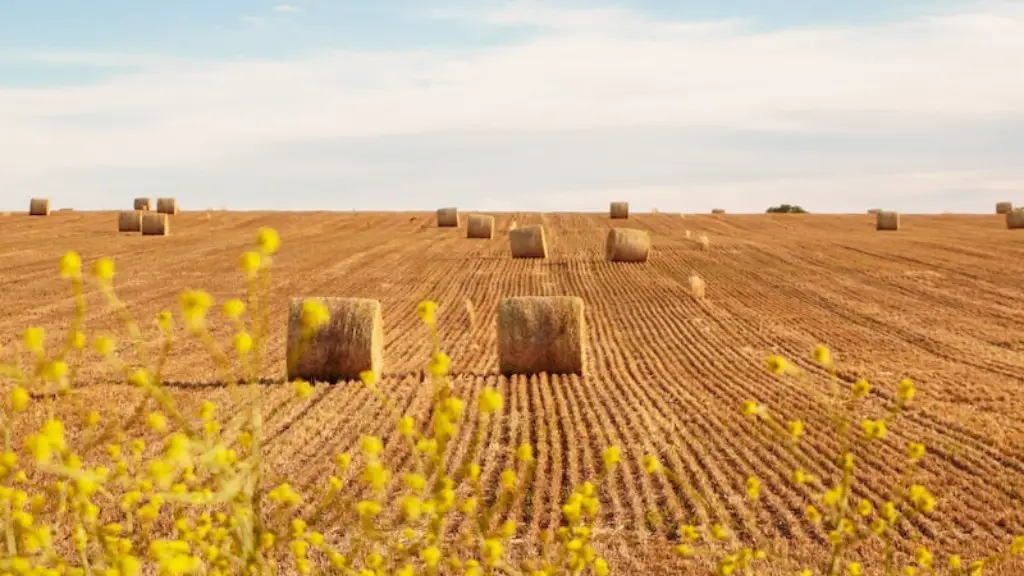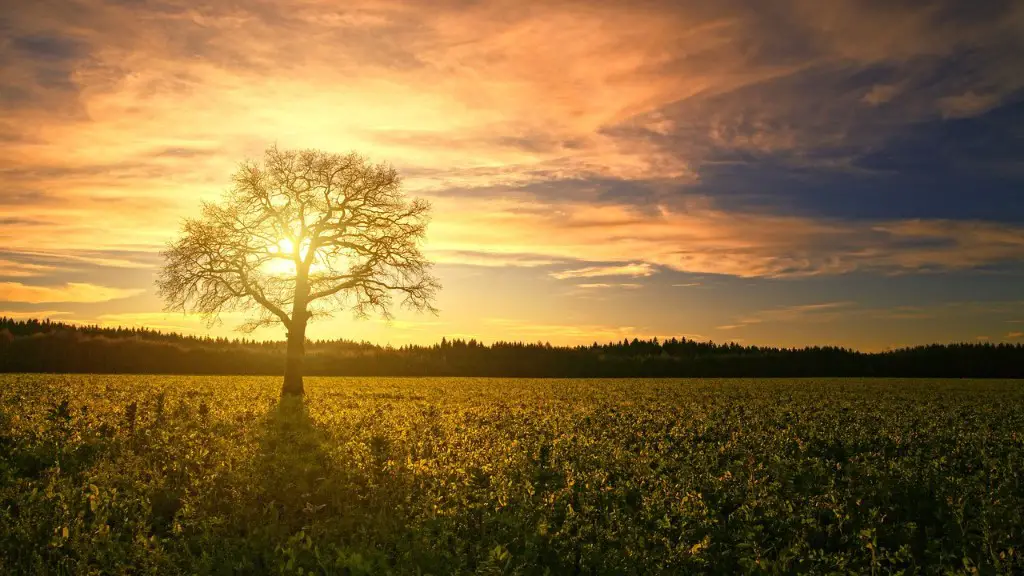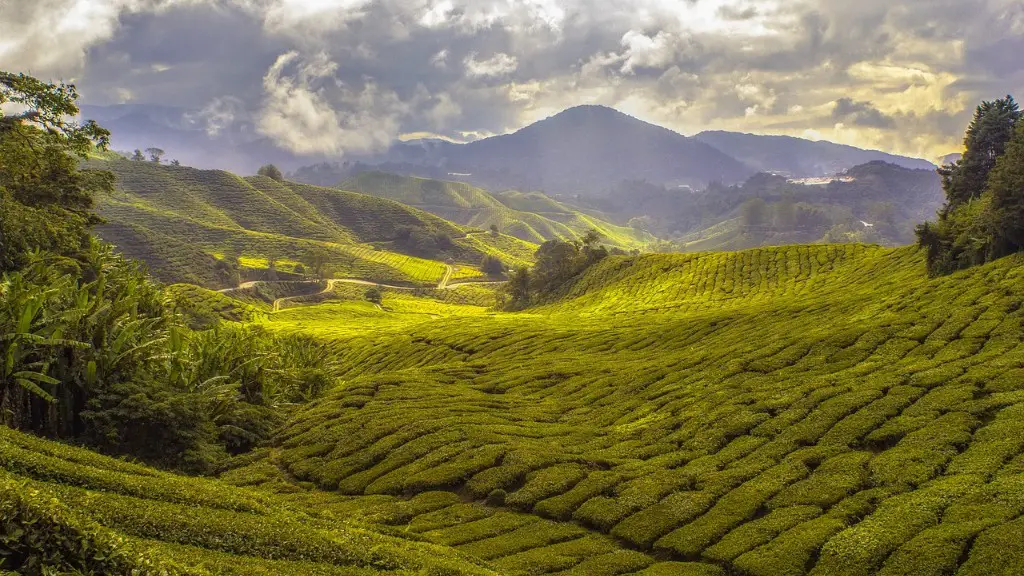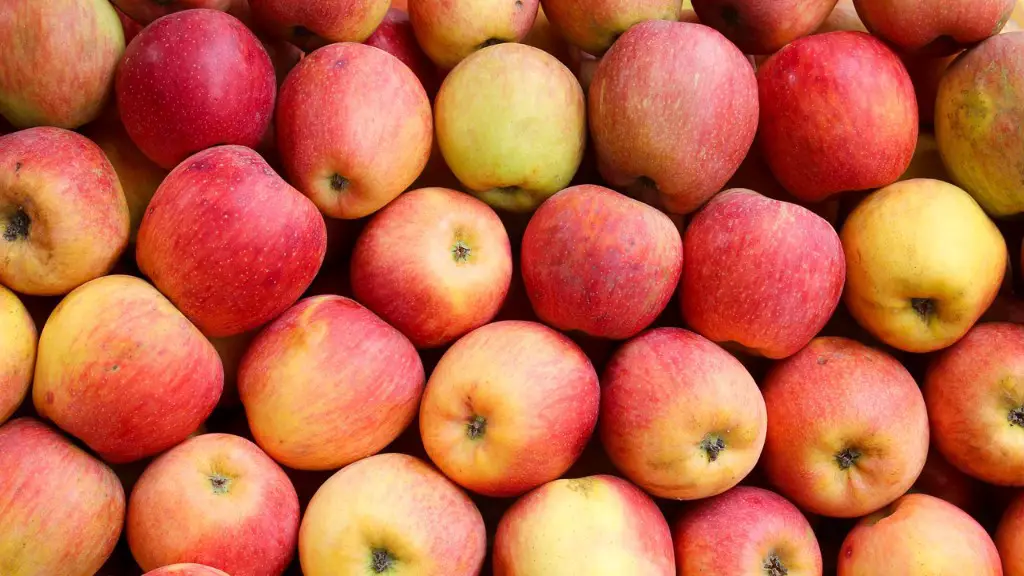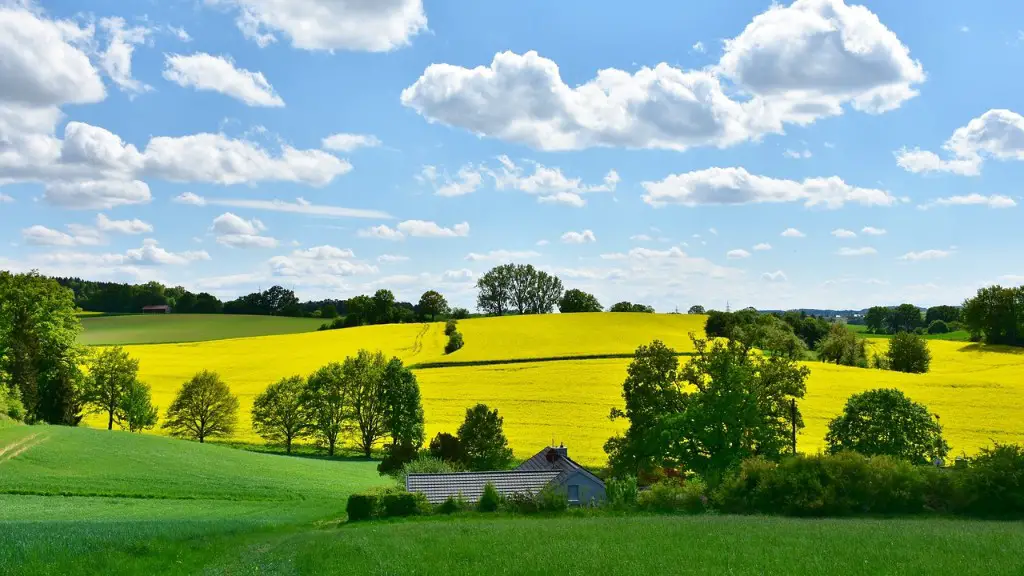Dryland agriculture is a type of farming that is practiced in areas that have very little or no irrigation. This type of agriculture is often practiced in arid and semi-arid regions.
Dryland agriculture is a type of agriculture that is practiced in arid or semi-arid regions, where rainfall is erratic and unreliable. Dryland agriculture is often characterized by drought-resistant crops and shallow wells.
What is the meaning of dryland agriculture?
Dryland farming is a type of agriculture that is practiced in areas where the potential water evaporation exceeds the annual precipitation. This type of farming is often defined as crop production in areas with less than 500 mm of annual precipitation, but this definition does not take into account the evaporation potential. Dryland farming is a difficult type of agriculture because farmers have to be very careful about irrigation and about the amount of water that is used for their crops.
Dry farming’s purpose is to conserve limited moisture during dry weather by reducing or even eliminating runoff and evaporation, thereby increasing soil absorption and retention of moisture. A dust mulch renewed after each rainfall would protect the surface of the soil against evaporation.
What is an example of dry farming
Dry farmed crops are those that are grown without irrigation. This means that they rely on the water that is stored in the soil, rather than on rainfall during the growing season. Dryland grain crops, such as wheat, corn, millet, and rye, are particularly well-suited to this type of farming.
Drylands are areas that receive very little rainfall—less than 250 mm per year. They are found on all continents, and include grasslands, savannahs, shrublands and woodlands. Drylands are most common in Africa and Asia—for example, in the Sahel region in Africa and almost all of the Middle East.
Drylands are home to more than 2 billion people—about one-third of the world’s population. People living in drylands are often poor and have limited access to water, food, and other resources. They are also at increased risk from climate change and extreme weather events, such as droughts and floods.
The United Nations Convention to Combat Desertification (UNCCD) is the only legally binding international agreement that specifically addresses the problems of dryland regions. The UNCCD was adopted in 1994 and came into force in 1996.
What are the benefits of dryland farming?
Dryland farming is a type of agriculture that relies on rainfall, rather than irrigation, to water the crops. It is practiced in areas where the rainfall is too low to support traditional farming methods. Dryland farming is a risky business, as crops can fail completely if there is a drought. However, it can be a very rewarding enterprise if managed correctly.
Dryland farming is becoming increasingly important as climate change leads to more frequent droughts in many parts of the world. It is a more sustainable form of agriculture, as it does not require the use of scarce water resources. Dryland farming also helps to conserve soil, as there is no need for tilling or ploughing.
If you are considering dryland farming, it is important to choose the right crops for your area. Some crops, such as sorghum and millet, are more drought-resistant than others. It is also important to have a good irrigation system in place, in case of a drought. With proper planning and management, dryland farming can be a successful and sustainable way to produce food.
Drylands are areas that are dry for long periods of time. They are characterized by a lack of water, which can affect both natural and managed ecosystems. This lack of water can constrain the production of livestock, crops, wood, forage, and other plants. It can also affect the delivery of environmental services.
What is the difference between dry farming and dryland farming?
Rain-dependent agriculture is a type of agriculture that is highly dependent on rainfall. This type of agriculture is practiced in areas that receive less than 750 mm of rainfall per year. Rain-dependent agriculture is characterized by low crop yields, high water requirements, and vulnerability to droughts.
Dry farming is a type of farming in which moisture is maintained by raising special type of crops. These crops are typically drought resistant and can survive in areas with little rainfall. Dry farming is practiced in areas where the rainfall is insufficient to support wet farming.
Wet farming is a type of farming, which depends mainly upon rains. Crops such as rice, wheat, and sugarcane are grown in these conditions. Wet farming requires more irrigation and is practiced in areas where there is ample rainfall.
What was the problem with dry farming
Dry agriculture has two significant drawbacks: the threat of crop loss and low yields. These might happen even if you use a traditional watering system, but the dry method has more problems and failures because of poor management, especially in a year when there isn’t enough rain.
Ragi (Finger Millet) is a crop that is specially suited for dryland farming. It requires rainfall in the range of 700-1200 mm on an annual basis, which is less than what is required for other crops such as rice, jute, and sugarcane. Dryland farming is referred to as the practice of farming in semi-arid areas with drought-resistant crops and moisture conservation.
Why did farmers do dry farming?
Dry farming is a type of agriculture that involves little or no irrigation. Farmers who practice dry farming rely on natural rainfall to provide the water needed to grow their crops. In some cases, farmers may supplement rainfall with irrigation from wells, streams, or other natural sources.
Dry farming is often practiced in regions that experience long periods of drought. The goal of dry farming is to improve water-use efficiency and minimize the amount of water needed to grow crops. Farmers who practice dry farming typically use a variety of strategies to improve water-use efficiency, including crop rotation, planting native and drought-tolerant plants, and mulching.
Dry farming has a long history and is practiced in many parts of the world. In the United States, dry farming was common in the Great Plains region during the late 19th and early 20th centuries. In recent years, dry farming has gained popularity as a climate resilience strategy in response to drought and water shortages.
Dryland farming can be difficult, as farmers must be careful not to over-utilize the land and deplete the soil of its nutrients. In addition, dryland farming cannot always rely on rainfall, and thus farmers must be sure to have drought-resistant crops. However, dryland farming has been practiced for centuries in many parts of the world, and can be successful if done carefully.
What is farming without water called
Dry farming is a type of agriculture where crops are grown without irrigation in regions with limited moisture. This type of farming is typically done in areas with less than 20 inches (50 centimetres) of precipitation annually. Dry farming requires more attention to the management of soil and water resources, as well as the selection of drought-resistant crops.
Dry and sub-humid lands are those which are prone to drought and typically have low or unreliable levels of rainfall. They are found in arid and semi-arid regions, as well as in some parts of the tropics and subtropics.
Around three billion people – just over 40% of the world’s population – live in drylands. These areas are home to some of the world’s most vulnerable communities, who are often marginalised and lack access to essential services.
Drought is a major problem in drylands, and can have a devastating impact on livelihoods. Crops may fail, water sources may dry up, and livestock may die. This can lead to hunger, poverty and displacement.
Climate change is making the situation worse, as drylands are becoming drier and more prone to extreme weather events such as heatwaves and dust storms.
There is a urgent need to address the challenges faced by dryland communities, and to find ways to help them adapt to the changing climate.
Why is it called dryland?
While many other sports always occur on land, the term “dryland” comes from the fact that winter sports take place on snow or ice. Thus, off-season training during the summer and fall months became commonly referred to as dryland training. Dryland training helps athletes to develop the muscles and skills needed to excel in their sport, and can be tailored to the specific needs of the sport.
Dry regions are economically fragile regions which are highly vulnerable to environmental stress and shocks. Degraded soils with low water holding capacities along with multiple nutrient deficiencies and depleting ground water table contributes to low crop yields and further leading to land degradation.
Dry regions need to be given special attention in order to mitigate the effects of environmental stress and shocks. Sustainable land management practices need to be adopted in order to improve the soil health and water holding capacity. Improving irrigation infrastructure and availability of water for agriculture is crucial for the dry regions. In addition, complementary measures such as promotion of drought resistant crops, horticulture and agroforestry can help in mitigating the effects of drought and improving the livelihoods of the people residing in these regions.
Is the most popular dryland crop
Dryland farming is a type of agriculture that relies on rainfall rather than irrigation. Dryland farming is rain-fed agriculture, relying on rain rather than irrigation. It includes a wide range of crops, including corn, sorghum, wheat, oats, barley, rye, sunflowers, flax, and most other grain crops. Dryland farming is often practiced in areas where the rainfall is erratic and unreliable, and droughts are common.
Dryland farming is a type of agriculture that is practiced in areas where the rainfall is insufficient to support crops that require irrigation. Dryland farming is characterized by the use of techniques that conserve precious moisture, such as minimal tillage, crop rotation, and the planting of drought-resistant crops. Dryland farming is practiced in the semiarid American Great Plains and Canadian Prairies.
Conclusion
Dryland agriculture is a type of agriculture that is adapted to arid or semi-arid conditions, where rainfall is expected to be below 650mm per year.
Dryland agriculture is a type of farming that is done in areas where the rainfall is insufficient to support the growth of crops. Farmers who practice dryland agriculture have to be careful about the amount of water they use, as they can easily overuse the available water and cause the soil to become dry and unproductive.

